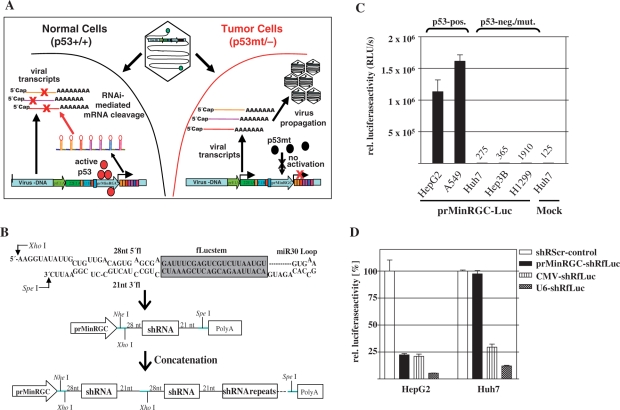Figure 1.
Concept of p53-dependent, RNAi-mediated modification of the adenoviral tropism. (A) Scheme of tumor selectively replicating adenovirus that expresses a self-inhibitory, antiviral RNAi-network in response to p53. (B) Used miR30-shRNA-motifs and concatenation to generate RNAi-networks (miR30-shRfLuc as example). (C) Activation of the p53-selective promoter prMinRGC in cell lines with different p53-status. Cells were cotransfected with prMinRGC-fLuc and CMV-LacZ. Luciferase activity was determined 48 h post transfection (mean ± SD). The prMinRGC-promoter is highly activated in p53-positive cell lines whereas activation is absent in p53-negative or mutated cells. (D) HepG2 and Huh7 cells were cotransfected with CMV-fLuc, SV40-LacZ and shRNA-expression plasmids under control of a U6-, CMV- or prMinRGC-promoter (shRfLuc relative to the corresponding shRScr-control, mean ± SD). The results show that RNAi can be expressed in a p53-selective manner.

